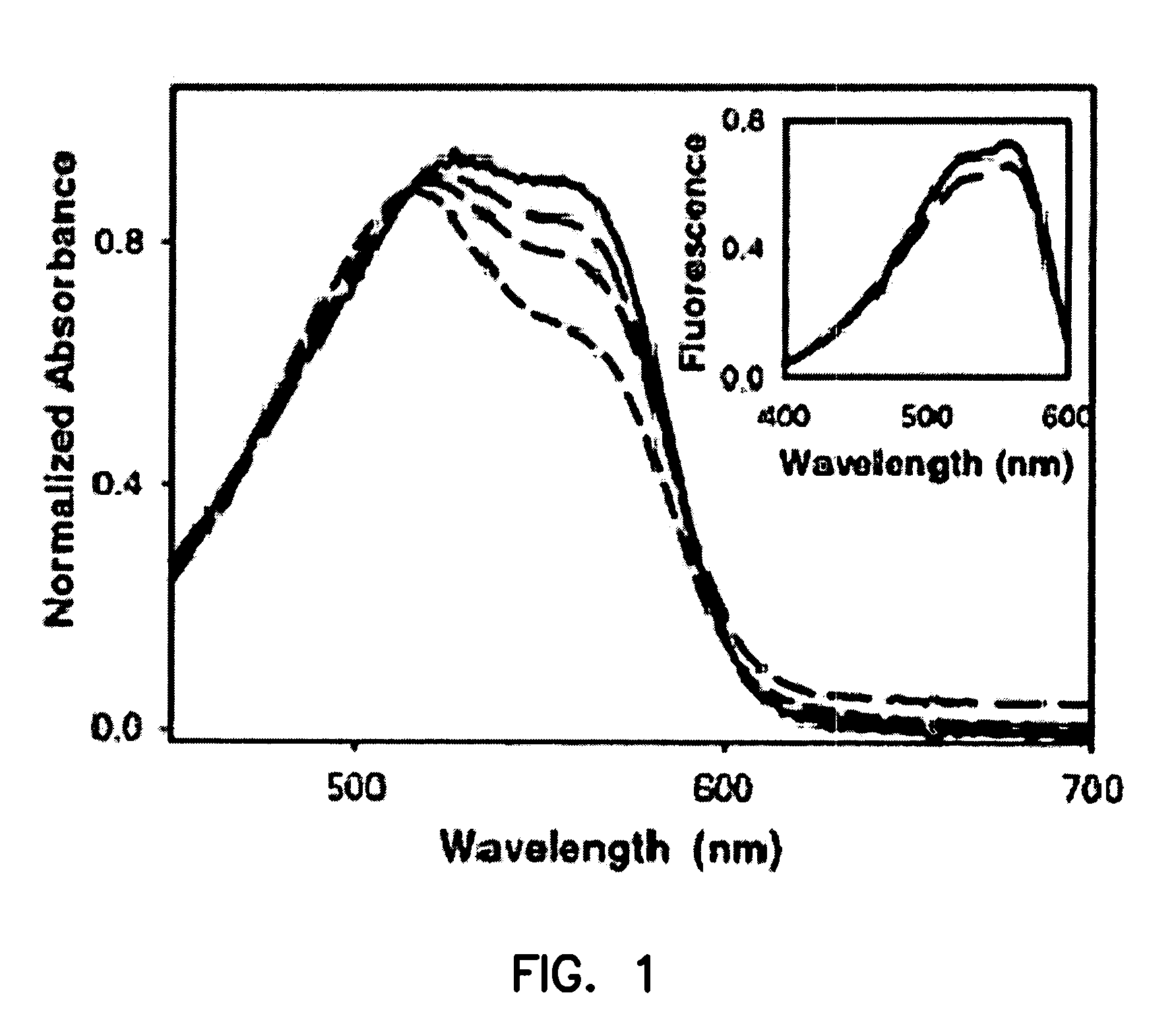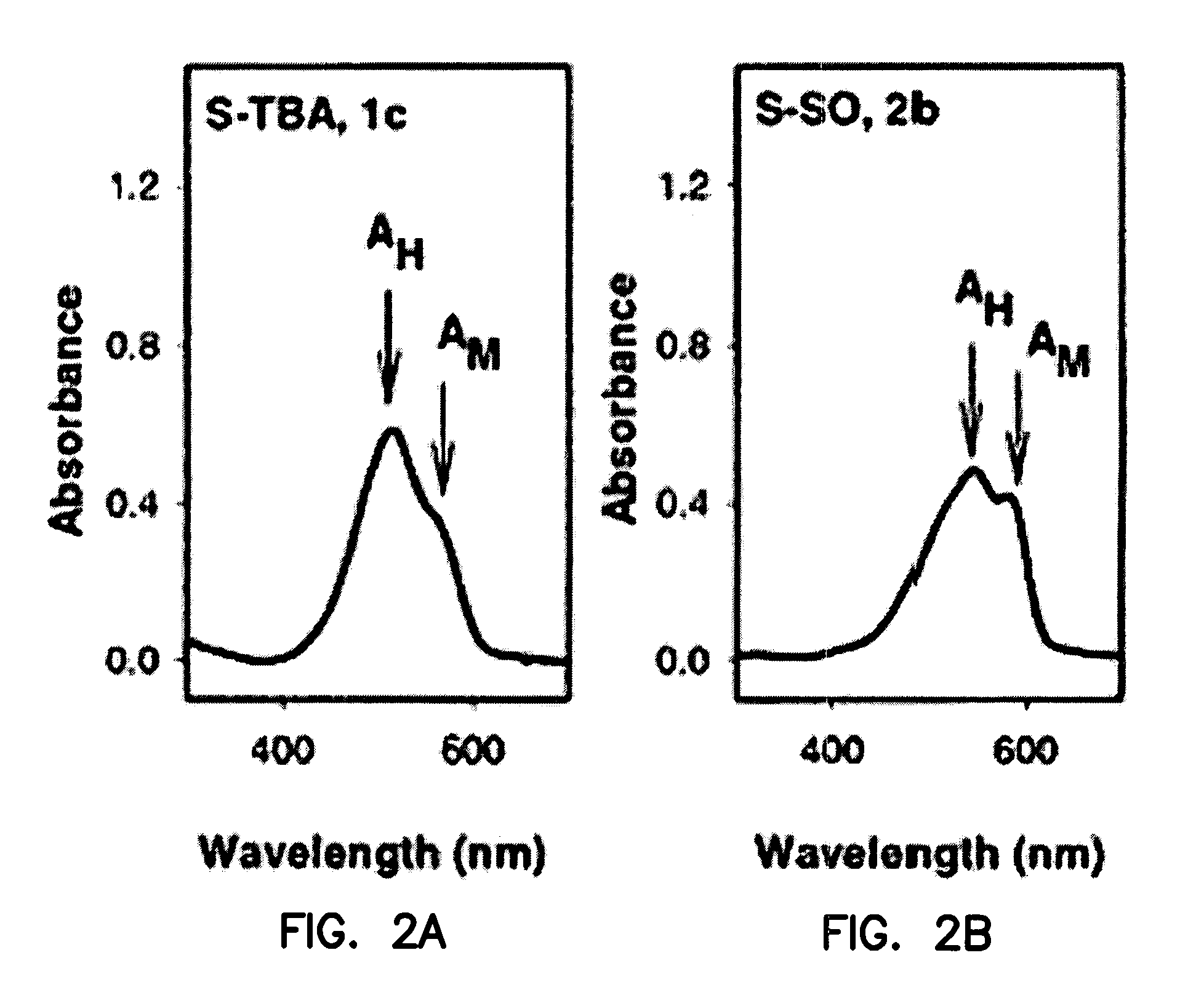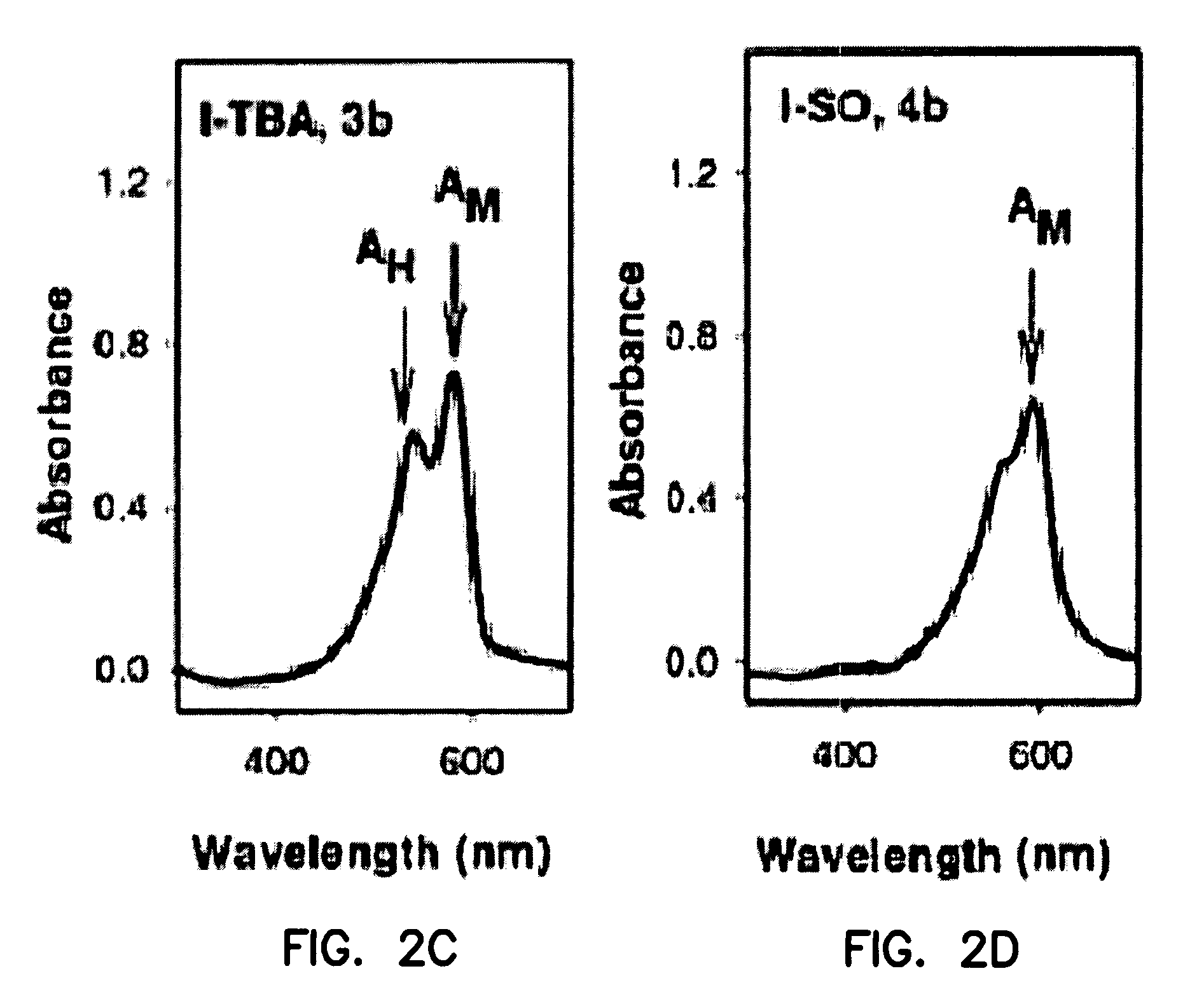Live cell biosensors
a biosensor and live cell technology, applied in the field of environmental sensitive dyes, can solve the problems of low sensitivity, preventing the study of many important targets, and limiting the use of refret-based techniques,
- Summary
- Abstract
- Description
- Claims
- Application Information
AI Technical Summary
Problems solved by technology
Method used
Image
Examples
example 1
Synthesis of Dyes
[0188]This Example describes the synthesis of useful, water-soluble derivatives of the 1a dye. New analogues were made, for example, by substitution of a quaternary amino group in the 1a dye with a much more hydrophilic sulfonato group (—SO3Na). In some analogues, cysteine-selective iodoacetamido groups were also added (e.g., at R2) for covalent attachment to binding domains.
[0189]Dyes having formulae 1-4 were synthesized. Formula 1 is as follows.
[0190]
Structure 1 is also referred to herein as S-TBA. A number of different dye compounds were made that had formula 1, including those with structures 1a-1h. The substituents present on each of dye compounds 1a-1h were as follows:
[0191]1a: R1=—(CH2)3—N+(CH3)2—(CH2)2—NCS; R2=H; R3=butyl.
[0192]1b: R1=ethyl; R2=H; R3=methyl.
[0193]1c: R1=—(CH2)3—SO3−; R2=H; R3=methyl.
[0194]1d: R1=—(CH2)3—SO3−; R2=FmocNH—; R3=methyl.
[0195]1e: R1=—(CH2)3—SO3−; R2=NH2; R3=methyl.
[0196]1f: (S-TBA-IAA): R1=—(CH2)3—SO3−; R2=ICH2CONH2; R3=methyl.
[01...
example 2
Methods for Making and Using Biosensors
[0320]This Example illustrates how to make and use the biosensors of the invention. The specific biosensor described here was based on the HIV-1 neutralizing antibody Fab fragment X5, which binds to HIV envelope protein gp120 after forming a complex with the host cell receptor CD4. See Moulard, M. et al., Broadly Cross-reactive HIV-1-Neutralizing Human Monoclonal Fab Selected for Binding to gp120-CD4-CCR5 Complexes. Proc Natl Acad Sci USA 99, 6913-6918 (2002).
Materials
[0321]The SB medium and phagemid pComb3X employed were obtained as described in Barbas et al., Phage Display: A Laboratory Manual. (Cold Spring Harbor Laboratory Press, Cold Spring Harbor; 2001). Soluble CD4 and IgG 2G12 were obtained from the National Institute of Health AIDS Research and Reference Program (ARRRP); soluble CD4 was also obtained from Progenics Pharmaceuticals, Inc. Gp 120BaL was obtained from Quality Biological Inc. (HIV BaL rgp120).
Recombinant DNA Procedures
[0322...
example 3
Detecting Phosphorylation Induced Changes in Erk
[0356]This Example illustrates that the dyes of the invention can be attached directly to a protein of interest (e.g. Erk), where the dyes respond to conformational changes and phosphorylation. In particular, the I-TBA-3CNPh dye was attached to cysteine 214 of the MAP kinase Erk2, where it responded to Erk phosphorylation. A structure for the I-TBA-3CNPh dye is provided below.
[0357]
[0358]FIG. 15A shows the I-TBA-3CNPh dye in a space filling model as it is thought to fit into the Erk2 structure. This model was based on tryptic digestion combined with mass spectroscopic sequencing of the labeled protein, and on docking studies. The lighter (yellow) residues represent two lysines undergoing hydrogen bonding with the dye, and a tryptophan interacting through π-π stacking. Phosphorylation of the purple residues altered the conformation of the protein, affecting the tryptophan interaction and perturbing some of the hydrogen bonds. Such phosp...
PUM
| Property | Measurement | Unit |
|---|---|---|
| light wavelength | aaaaa | aaaaa |
| excitation or emission light wavelength | aaaaa | aaaaa |
| molecular weight | aaaaa | aaaaa |
Abstract
Description
Claims
Application Information
 Login to View More
Login to View More - R&D
- Intellectual Property
- Life Sciences
- Materials
- Tech Scout
- Unparalleled Data Quality
- Higher Quality Content
- 60% Fewer Hallucinations
Browse by: Latest US Patents, China's latest patents, Technical Efficacy Thesaurus, Application Domain, Technology Topic, Popular Technical Reports.
© 2025 PatSnap. All rights reserved.Legal|Privacy policy|Modern Slavery Act Transparency Statement|Sitemap|About US| Contact US: help@patsnap.com



